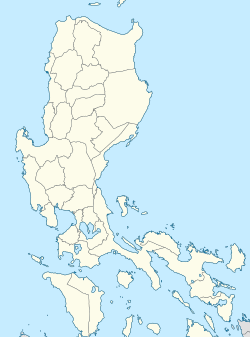| Parishes | Vicariate of
Holy Family | - Christ the King (San Pedro, Laguna)
- Holy Family Parish (San Pedro, Laguna)
- Most Holy Name of Jesus (San Pedro, Laguna)
- Mother of Good Counsel (San Pedro, Laguna)
- Our Lady of the Holy Rosary (San Pedro, Laguna)
- San Martin de Porres (San Pedro, Laguna)
- St. Joseph the Patriarch (San Pedro, Laguna)
- St. Joseph the Worker (San Pedro, Laguna)
|
|---|
Vicariate of
San Pedro | - San Pedro Apostol (San Pedro, Laguna)
- San Lorenzo Ruiz (San Pedro, Laguna)
- Sto. Rosario (San Pedro, Laguna)
- Jesus in the Holy Sepulchre (San Pedro, Laguna)
- Our Lady of Fatima (San Pedro, Laguna)
- Our Lady of Lourdes (San Pedro, Laguna)
- Our Lady's Assumption (San Pedro, Laguna)
|
|---|
Vicariate of
San Isidro
Labrador | - San Isidro Labrador (Biñan, Laguna)
- Blessed Sacrament (Biñan, Laguna)
- Nuestra Señora dela Paz y Buen Viaje (Biñan, Laguna)
- Our Lady of the Miraculous Medal (Biñan, Laguna)
- Risen Lord (Biñan, Laguna)
- San Antonio de Padua (Biñan, Laguna)
- San Pedro Apostol (Biñan, Laguna)
- San Vicente Ferrer (Biñan, Laguna)
- St. Joseph the Worker (Biñan, Laguna)
- St. Mother Teresa of Calcutta (Biñan, Laguna)
- Sto. Niño de Cebu (Biñan, Laguna)
|
|---|
Vicariate of
Sta. Rosa
de Lima | - Sta. Rosa de Lima (Sta. Rosa, Laguna)
- Chair of St. Peter (Sta. Rosa, Laguna)
- Our Lady of the Most Holy Rosary (Sta. Rosa, Laguna)
- Our Mother of Perpetual Help (Sta. Rosa, Laguna)
- San Lorenzo Ruiz (Sta. Rosa, Laguna)
- St. John Bosco (Sta. Rosa, Laguna)
|
|---|
Vicariate of
St. Polycarp | - St. Polycarp (Cabuyao, Laguna)
- St. Francis of Assisi (Cabuyao, Laguna)
- St. Joseph the Worker (Cabuyao, Laguna)
- San Vicente Ferrer (Cabuyao, Laguna)
- San Rafael Arkanghel (Quasi-Parish) (Cabuyao, Laguna)
- San Miguel Arkanghel (Calamba, Laguna)
|
|---|
Vicariate of
St. John
the Baptist | - St. John the Baptist (Calamba, Laguna)
- Holy Trinity (Calamba, Laguna)
- Mary Help of Christians (Calamba, Laguna)
- Our Lady of Fatima (Calamba, Laguna)
- San Agustin (Calamba, Laguna)
- San Isidro Labrador (Calamba, Laguna)
- San Pedro Calungsod (Calamba, Laguna)
- San Vicente Ferrer (Calamba, Laguna)
- St. Joseph the Worker (Calamba, Laguna)
- St. Mary Magdalene (Calamba, Laguna)
- Sts. Peter and Paul (Calamba, Laguna)
|
|---|
Vicariate of
Immaculate
Conception | |
|---|
Vicariate of
St. Paul the
First Hermit | - St. Paul the First Hermit (San Pablo, Laguna)
- Nuestra Señora de los Remedios (San Pablo, Laguna)
- San Gabriel Arkanghel (San Pablo, Laguna)
- St. Francis of Assisi (San Pablo, Laguna)
- St. Luke the Evangelist (San Pablo, Laguna)
- Immaculate Conception (San Pablo, Laguna)
- San Roque (San Pablo, Laguna)
- Our Lady of the Pillar (Alaminos, Laguna)
|
|---|
Vicariate
of San
Bartolome | |
|---|
Vicariate of
San Antonio
De Padua | |
|---|
Vicariate of
Our Lady of
Guadalupe | |
|---|
Vicariate of
St. James | |
|---|
Vicariate of
Sts. Peter
and Paul | |
|---|
|
|---|









